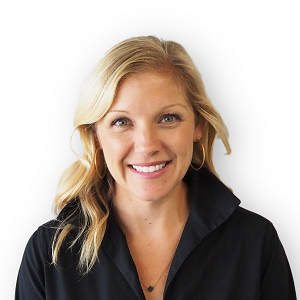
BY SARAH YI
Since the inception of the individual coverage HRA (ICHRA) in 2020, we’ve kept an eye on the California market as an early adopter and leader in the space. There are a few factors at play in California that make ICHRAs an increasingly appealing benefits solution compared to other parts of the country. These factors include a strong individual insurance market, the continued rise of remote workers, and something I like to call the “Kaiser Effect.” Less specific to California but equally important to ICHRA’s growth in popularity are the ongoing nationwide trends of employers cutting health benefits costs and simultaneously offering personalized, competitive benefits to combat the Great Resignation.
As a reminder, ICHRAs are a fundamentally new benefits model based on reimbursing employees for health insurance instead of buying it for them. ICHRA isn’t subject to payroll taxes, employer taxes, or income taxes, and it offers flexibility and cost control for the employer and portability and personalization for employees.
The Kaiser Effect
There’s one thing we can all agree on: when it comes to Kaiser Permanente’s membership-based, integrated, managed care consortium, you either love it or you hate it. It’s simply a divisive subject among those who live where Kaiser operates. With plans in all of the state’s 19 pricing regions and 39 hospitals statewide, Kaiser Permanente is the largest and most profitable insurer in the state. With such a presence, it’s likely your clients have brought this challenge to you when weighing their options about their group plans.
Traditionally, if an employer chooses a Kaiser Permanente group plan, some employees will be thrilled, and others will be disappointed. It’s also problematic in the common scenario of a California-based company with remote workers outside of the Kaiser footprint, or say, a New York-based company with remote workers in California who would prefer a Kaiser plan. With an ICHRA, those that want Kaiser Permanente can have it, and those that prefer another carrier (or are in an area outside of Kaiser’s market) can choose what’s best for them.
Employers no longer have to choose on behalf of their employees and risk making half of their employees unhappy. I see these scenarios almost every day working with California brokers and their clients.
Remote work as the new normal
It’s no secret that the wave of newly remote workers in the wake of the pandemic is shaping the future of benefits. The percentage of workers working full-time remote is expected to double this year, according to a study by Enterprise Technology Research and more than 74% of businesses plan to permanently shift employees to remote work after the COVID-19 pandemic ends.
For those employers administering group plans, having workers in more than one location can be quite the challenge; as you know, it’s very difficult to keep part-time and remote workers on group plans.
A common scenario that we see is a carve-out ICHRA class for remote workers, where California businesses might offer group plans to those employees near headquarters, but offer an ICHRA to those outside of the company’s footprint so that those employees can choose a plan from a local carrier that’s strong in their area. Since ICHRAs allow business owners to allocate varying levels of benefits based on a specific class (like hourly vs. salary or part-time vs. full time, for example), ICHRA can help deliver benefits to these types of employees more seamlessly and efficiently than a group plan ever could.
A thriving individual health insurance market
The California individual insurance market is stabilized and competitive, making the state prime territory for ICHRA. When there are an abundance of plan options, carrier choices, and competition among those carriers, premium costs are lower and employees participating in an ICHRA are more satisfied.
The average rate change over the past three years amounted to only 1.1%, signifying stability in California’s individual insurance market. Twelve insurers offered 2022 health plans through Covered California, up from 11 carriers last year.
A record-high 1.8 million people have signed up for health insurance through the state’s exchange in 2022. As the market continues to stabilize and competition continues to increase, a growing number of geographies have IFP rates lower than small group, meaning employers’ benefits spend can stretch further with an ICHRA in key geographies in California, like LA and Sacramento.
Employers continue to cut costs
In the wake of the pandemic and with a possible recession looming, employers continue to seek out ways to control their benefits spend. The number of employers that offer health benefits is only 54%, and that number is decreasing year over year. Employers also try cost cutting measures like increasing employee contributions, shifting more of the cost to their employees.
In 2021, average employee premium contributions increased to $3,331 annually ($277.58 monthly), versus $3,269 per year ($272.42 per month) the previous year. According to findings by Aon, employees paid an additional $2,023 toward deductibles, co-pays, and co-insurance in 2021.
The ICHRA model benefits workers and employers alike. In fact, the average ICHRA covers 147% of lowest cost bronze plans and 122% of lowest cost silver nationwide compared to group plans that only cover 84% of single plan premiums (and 35% of small groups cover less than half with the rest coming out of employees’ paychecks.)
What’s more, 80% of our small business clients are net new to benefits, combatting the troubling trend of small businesses dropping their group health plans.
ICHRA continues to gain traction
A recent study by KFF and PBGH revealed that 48% of its respondents said they were “considerably or highly likely” to use an ICHRA to offer alternative coverage to employees. A survey of CEOs by PBGH and Kaiser Family Foundation reaffirms this idea. In their study, almost 9 in 10 said the current system will be unsustainable for them within the coming 5 to 10 years. A NFIB survey found that the cost of healthcare was small business owners’ most severe problem—those survey results have not changed since 2012. Group rates continue to increase year over year and employers continue to look for ways to control costs.
This past year, we saw a 96% renewal rate among our clients, which points to their satisfaction with their new benefits offering and the effectiveness of ICHRA and our platform to meet their needs.
We’ve also seen a fundamental shift in how brokers and benefits professionals are viewing ICHRA. Initially when ICHRA came out, it was clients that were in a pinch and backed into a corner and looking to their broker for cost-saving ideas.
More and more, the client or someone at the company is now interested and likes the reimbursement model of health insurance and asks their broker about ICHRA. Today, brokers are actually prospecting new business with ICHRA.
California ICHRAs by the numbers
Based on our data in California, the average monthly reimbursement for families is $588.17 and $525.70 for single enrollees. These numbers are more generous than the national average, which is $559.22 for families and $466.32 for single enrollment each month. Slightly more than half of employers opt to reimburse for qualified medical expenses in addition to premiums.
It’s no secret that the wave of newly
remote workers in the wake of
the pandemic is shaping the future
of benefits.
This gives employers a tax-advantaged way to help employees cover healthcare costs that would normally be out of pocket, like therapy, chiropractic care, eyeglasses and contacts, and even dental services.
While the average size of our ICHRA clients is 6, that doesn’t really tell the whole story. The majority of our clients fall in the 10 to 20 category, but there is high variance in client size. Legacy small business clients comprise a large portion of our business, but the fastest growing segment is our larger client base. In fact, Applicable Large Employers (ALEs) are the fastest growing segment among our clients, with a 210% rise in large employer enrollments over last year. Of those, half of those clients are in blue collar services, and nearly 75% are brought on via broker referral.
The average age for California-based employees on our platform is 39, slightly younger than the national average of 40 years. Both numbers land in the bottom third of eligible ages for coverage, typically the healthiest and least expensive to insure. In contrast, according to KFF, the most common age group buying plans on Healthcare.gov is between 55 and 64.
Is an ICHRA a good fit for my client?
We are very transparent about the fact that ICHRAs aren’t for everyone. To determine if it might be a good fit for your client, think through the following common pain points as they relate to your client’s unique situation.
• With a tight job market, I need to offer competitive benefits to attract and maintain top talent
• I want an affordable benefits solution that can grow with my growing company
• My company doesn’t have the reserve to take on health care risk anymore
• We struggle with participation rates on our group plan
• I want to offer my employees health benefits but I don’t have the capacity to manage it
• I don’t have any flexibility to change my plan offering. Plus, my employees aren’t happy with it.
• My budget continues to go up to cover the costs of renewal increases year after year
• I want to help all my employees, including part-time staff and remote workers, with healthcare costs but I can’t afford a group plan
• My company is expanding outside one geographical area and our group plan doesn’t work for out-of-state
Regardless if your client is a small company hoping to help its employees (many times for the first time), a larger one with medically underwritten group plans hoping to satisfy the employer mandate, or 1000+ employee companies that are self-funded with a multi-state footprint, ICHRA wins across the spectrum for California businesses due to its optimized approach to risk de-management, choice, and flexibility.
We’ve designed a certified broker partner program via takecommandhealth.com, a suite of helpful broker educational resources and tools, and comparable commission plans. We’re also currently launching our new payment solution out of beta to help streamline the user experience for our clients.
You can also sign up for weekly webinars on our website or contact Sarah@takecommandhealth.com directly to see if an Individual Coverage HRA might work for your client.

SARAH YI is a Senior Account Executive at Take Command, a SaaS that offers the industry’s first end-to-end ICHRA solution paired with personalized enrollment support. Sarah focuses on deepening Take Command’s broker relationships and expanding ICHRA adoption across the U.S., particularly in the mid-market space.
